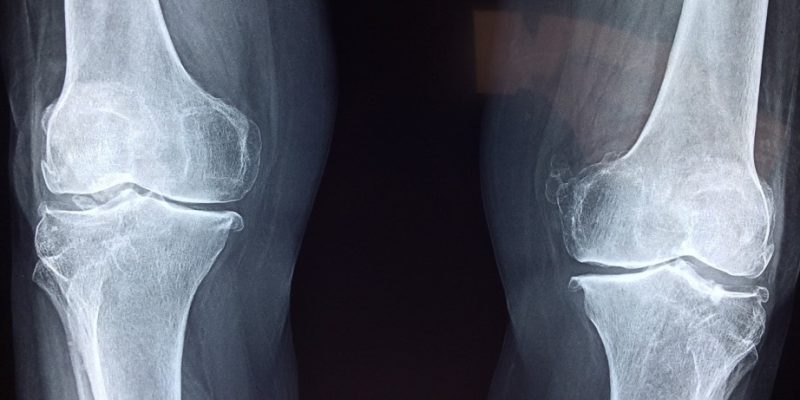
A chiropractor and occupational therapist provide two distinct services. Some of us may have visited an occupational therapist or a chiropractor and observed some similarities between the two. Yes, they can be similar but there are subtle differences that we must understand.
You may require help with rehabilitation, managing long-term injuries or ensuring optimal workplace health. Understanding the differences will help us choose the best treatment for our needs. No more waiting, let’s get into the details.
10 Key Differences Between an Occupational Therapist and a Chiropractor
Below are some key differences between occupational therapy and the services of a chiropractor.
1. Definition and Scope
Occupational Therapy
- An occupational therapist is a healthcare professional that specializes in helping patients recover from injuries and illness.
- The occupational therapist recommends the right exercises to help patients regain normal function and perform regular tasks and activities.
- Occupational treatment includes regular tasks like tying shoe laces, picking up things, and putting on clothes. Over time, the patient’s motor skills improve.
Chiropractor
- A chiropractor focuses on treating a patient’s musculoskeletal conditions.
- The treatment includes massages and spinal readjustments to reduce back pain in the neck, spine and other body parts.
2. Goals and Objectives
Occupational Therapy
- The main objective of occupational therapy is to help the patient recover and perform regular activities such as cooking, cleaning, gardening and walking.
- It aims to reduce dependence on other people and equipment while enhancing quality of life.
- Occupational therapy is usually recommended for people who want to lead normal lives after injuries, surgeries or neurological disorders.
Chiropractic
- A chiropractor aims to relieve pain in the back, neck, spine, and joints.
- Over time, this treatment restores joint mobility and aligns the spine.
- Chiropractic treatment does not require any complex surgeries or medication.
3. Conditions Treated
The conditions that occupational and chiropractic treatments address are as follows:
Occupational Therapy
- Conditions that occupational therapy addresses include autism, arthritis, cerebral palsy, traumatic brain injuries and developmental issues.
- Some mental disorders that develop over time can interfere with daily functioning.
- Grievous injuries or complex surgeries can make normal movements difficult.
- Occupational therapy helps patients recover from the above problems and resume normal body functions over time.
Chiropractic
Chiropractors treat the following conditions:
- Back, neck, and joint pain
- Headaches and migraines
- Arthritis
- Injuries caused by sports and accidents
- Sciatica
- Scoliosis
- Carpal tunnel syndrome
Other conditions that chiropractors may treat include the following:
- Tennis elbow
- Shoulder pain
- Knee and disc pain
- Fibromyalgia
- Shin splints
- Tennis elbow
- Postural issues
- Stress problems
- Sleep disorders
4. Treatment Techniques
Occupational Therapy
Occupational therapists employ a variety of treatment techniques including the following:
- Detailed activity analysis
- Therapeutic exercises
- Adaptive equipment
- Environmental modifications
- Sensory integration
- Cognitive behavioral techniques
- Social skills training
- Group sessions
Chiropractic
Chiropractitioners use slightly different treatment techniques, such as the following:
- Spinal manipulation
- Traditional adjustments
- Gonstead adjustment
- Thomson drop-table techniques
- Flexion distraction
- Trigenics
- Torque Release Technique
- May include specific exercises and lifestyle counseling
5. Educational Qualifications
The educational qualifications of chiropractors and occupational therapists are as follows:
Occupational Therapists
- In order to practice and render his services, an occupational therapist must have a Master’s or Doctorate in occupational therapy.
- Occupational therapists are licensed and certified by the country’s national boards.
- An occupational therapist has the required knowledge and training related to anatomy, neurology, psychology, and functional assessments.
Chiropractor
- Chiropractors must possess a Doctor of Chiropractic (DC) degree.
- Also, he must be licensed by the National Board
- His areas of specialization include anatomy, physiology, neurology and manual therapies.
6. Patient Age Group
Occupational Therapist
- Occupational therapists treat everyone including children, adults, and senior citizens.
- The occupational therapist addresses temporary and long-term problems/challenges.
Chiropractors
- A chiropractitioner mostly treats adults experiencing acute or chronic musculoskeletal pain.
- He may treat children and old people but his clientele include adults below 60.
7. Treatment Settings
Occupational Therapists
- Occupational therapists provide their services at hospitals, rehabilitation centres, schools and nursing homes. However, they may visit patients that are incapable of visiting healthcare institutions.
Chiropractors
- Most chiropractors work in chiropractic clinics and wellness centres.
- Some may work with other experts and healthcare providers.
8. Collaboration With Others
Occupational Therapists
● Occupational therapists may work with other teams or experts such as physicians, physical therapists, speech therapists and psychologists.
Chiropractors
● Chiropractors may have an independent role in treatment. However, the degree of integration with multi-disciplinary teams is lesser compared to occupational therapists.
9. Duration and Frequency
The duration and frequency of treatment can vary for occupational therapists and chiropractors
Occupational Therapists
- Occupational therapy is generally long-term. Patients may have to attend regular sessions over the course of months or years.
- Therapists set goals and measure them over time to determine patient progress.
- Time required is 2 – 3 hours per week. It reduces to 1 – 2 times a week as the patient’s condition improves.
Chiropractors
- Most chiropractic sessions are short and don’t require repeated visits.
- However, chronic issues may require regular visits and maintenance.
- Time required is 30 minutes to an hour or more.
10. Regulations
Insurance and regulatory requirements may differ for occupational therapy and chiropractic care.
Occupational Therapists
- Occupational therapy requires patients to opt out of health insurance for conditions that require it.
- Professional licensure strongly regulates occupational therapy.
Chiropractors
- Insurance is necessary for spine, back and neck conditions.
- The regulatory guidelines vary upon the country and state. License if mandatory though.
11. Drugs and Medicine
Chiropractors usually don’t prescribe any medications or administer any drugs while treating patients. There are exceptional cases where this may change.
Occupational Therapist
- Occupational therapists usually don’t administer drugs or prescribe medications.
- They focus mainly on assistive technology, education, and therapeutic sessions.
- Medication management may be used in combination with functional training.
- Occupational therapists may collaborate with pharmacists, doctors and other healthcare professionals to ensure that patients receive the right medication (for improved treatment).
Chiropractor
- There is limited scope for medication and drugs during occupational therapy.
- It follows a non-pharmacological approach. However, occupational therapists may refer patients to other experts who may prescribe medicines or drugs.




















